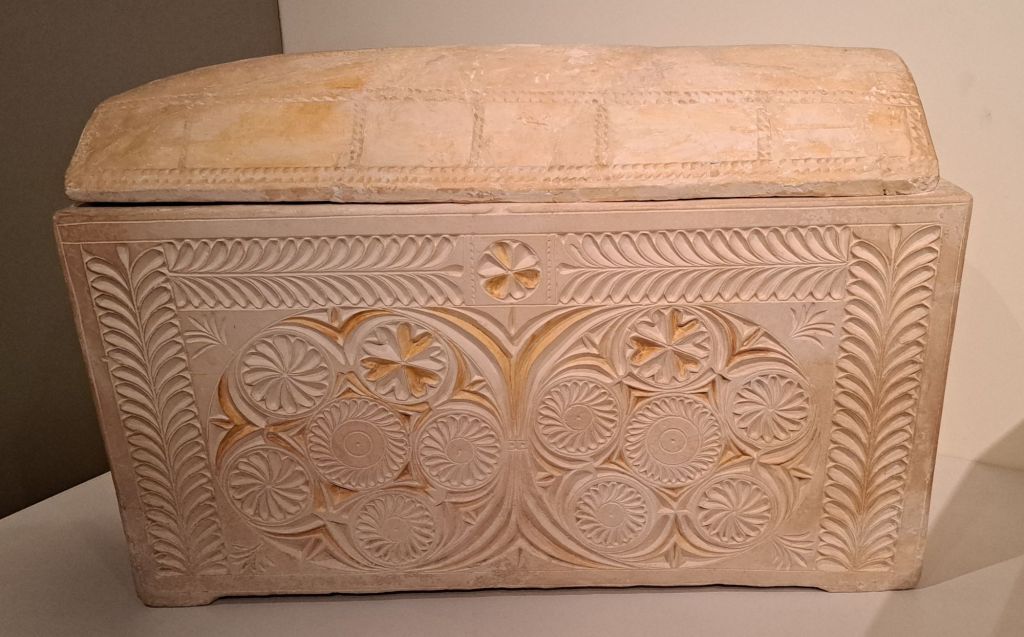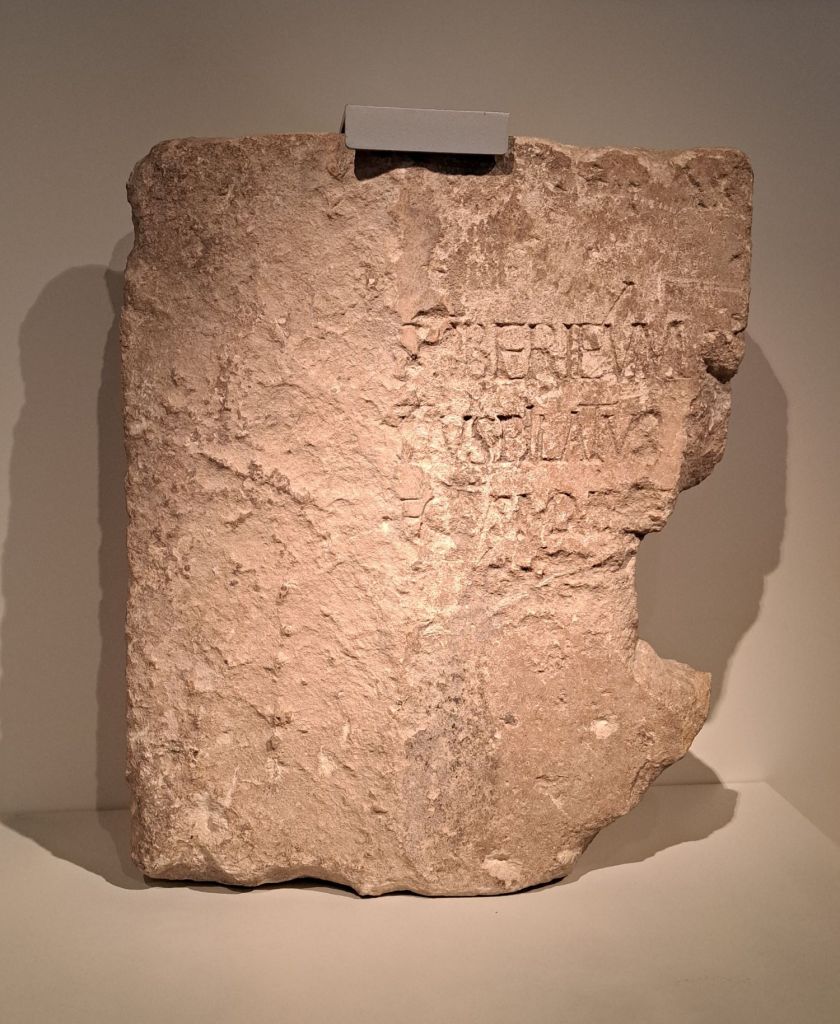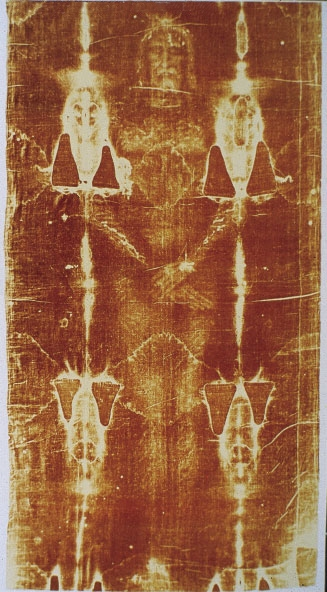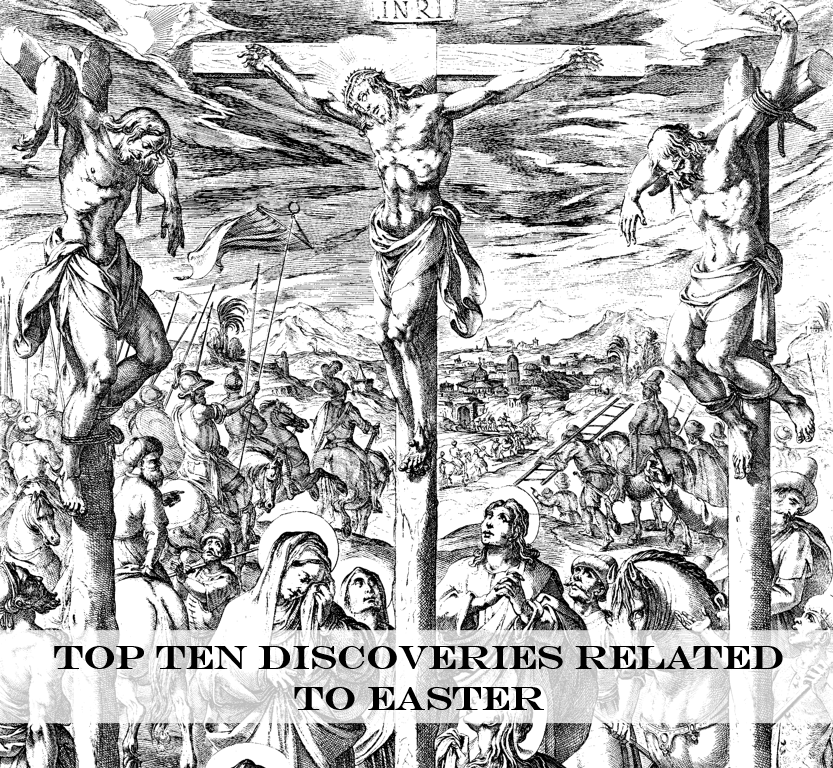
NOTE: Here is the podcast form of this blog, in which I discuss these ten finds with ABR’s Henry Smith and Luke Broersma.
The accounts of the death, and resurrection of Jesus of Nazareth in the New Testament are set in the real world of first-century Jerusalem. The clear testimony of the gospel writers and subsequent authors of the epistles is that Jesus lived, that he died, and that he was seen alive again after he had died. In fact, the apostles seem to anticipate objections to these claims and emphasize the credibility of the resurrection as the historical foundation on which their faith was built. Thus, the apostle John began his first epistle focusing on the three elements of legitimate Greco-Roman legal testimony1 with these words: “That which was from the beginning, which we have heard, which we have seen with our eyes, which we looked upon and have touched with our hands, concerning the word of life…” (1 Jn 1:1 ESV, emphasis added). Peter, another eyewitness of the resurrected Jesus, wrote, “For we did not follow cleverly devised myths when we made known to you the power and coming of our Lord Jesus Christ, but we were eyewitnesses of his majesty” (2 Pet 1:16 ESV). The apostles emphasized the historicity of the death and resurrection of Jesus, and their role as eyewitnesses to this event.
In support of these claims, here are the top ten finds that I believe demonstrate the historical reliability of the gospel accounts of the death and resurrection of Jesus. Unlike my other top ten lists, this one will be done chronologically in the order of events, rather than in order of importance.
10. Garden and Cave of Gethsemane
Then Jesus went with them to a place called Gethsemane, and he said to his disciples, “Sit here, while I go over there and pray” (Mt 26:36 ESV).
While the Bible never refers to the “Garden of Gethsemane” by that name, it does indicate that, on the night Jesus was betrayed and arrested, he went to pray at “a place called Gethsemane” (Mt 26:36; Mk 14:32) on the Mount of Olives (Lk 22:39) where there was a “garden” (Jn 18:1). This description matches the general area of the modern-day Garden of Gethsemane, an ancient olive grove in front of the Church of All Nations. The name Gethsemane comes from Hebrew and Aramaic words for ― “oil press.”2
Directly across the road is a lesser-known sight called the Cave of Gethsemane (or the Grotto of Betrayal), which may in fact be the actual site where the disciples slumbered and where Jesus was betrayed. Given that it was a cold night (Jn 18:18) it makes sense that they would have sought shelter in one of the nearby caves. The key verse to identifying the grotto with the betrayal of Jesus is John 18:4: “Jesus, knowing all that was going to happen to him, went out and asked them, “Who is it you want?” (emphasis added). Jesus went out of something within the garden. What did he go out of? A cave makes logical sense. Furthermore, archaeological excavations have revealed that the cave was used for pressing olives in ancient times.3 The Garden of Gethsemane and, more specifically, the Cave of Gethsemane, fit the biblical descriptions as the site of one of the most famous betrayals of all time.
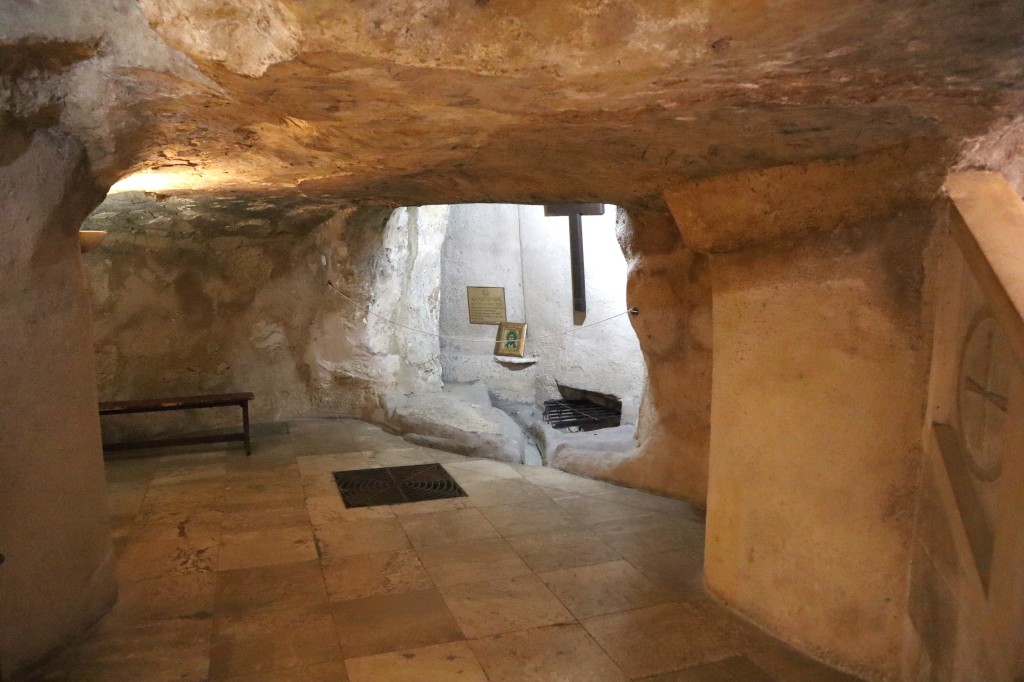
9. Caiaphas Ossuary
Then those who had seized Jesus led him to Caiaphas the high priest, where the scribes and the elders had gathered (Matt. 26:57 ESV)
According to the gospels (Mt 26:3, 57; Lk 3:2; Jn 11:49), Caiaphas was the high priest who presided over the trial of Jesus. The ancient historian, Josephus, records that Caiaphas’s full name was Joseph Caiaphas.4 In the New Testament, he was known simply by his clan name, Caiaphas.
In 1990, a construction team was working in the Old City of Jerusalem when their bulldozer plowed through the roof of a first-century tomb. Archaeologists were called in and discovered six ossuaries (limestone boxes used to inter the bones of the deceased after their body had decomposed); one of the ossuaries was beautifully decorated with rosettes and was inscribed with the name “Joseph son of Caiaphas.” Some have wondered why the name is poorly inscribed on one end of such an ornate ossuary. It seems the wealthy would often purchase an elaborate ossuary, which would later be inscribed by a family member – often the oldest son – when it was placed in the tomb. In this case, it was likely inscribed with a nail that was found nearby.5 Inside this bone box were the bones six people, including those of a 60-year-old man whom scholars believe was Caiaphas himself. It is ironic that the tomb of the man who sentenced Jesus to die have been found with his ossuary and bones in it, while the tomb of Jesus is empty.
8. Pilate Stone
And they bound him and led him away and delivered him over to Pilate the governor…. Pilate said to them, “Then what shall I do with Jesus who is called Christ?” They all said, “Let him be crucified!” (Mt 27:2, 22 ESV)
After being tried by Caiaphas, Jesus was taken to the Roman governor, Pontius Pilate and ultimately sentenced Jesus to death by crucifixion (Mt 27:2-67; Mk 15:1-15; Lk 23:1-52; Jn 18:29-19:38). Much is known about Pilate’s life and character as he is also mentioned by ancient writers, such as Josephus, Tacitus, and Philo.6
In 1961, archaeologists at Caesarea Maritima were excavating the theater when they unearthed a limestone block inscribed with a dedication to a building called the Tiberieum (likely in honor of Tiberius Caesar) from “Pontius Pilate, Prefect of Judea.”7 The stone had been reused as a step in a flight of stairs and the inscription was discovered when the workers turned it over. It was the first archaeological evidence for Pontius Pilate ever discovered. The Pilate stone confirms that Pilate was the Prefect of Judea, governing as the gospel writers described.
Then in 2018, a copper ring was “re-discovered” that likely referred to Pontius Pilate. It had been unearthed during the 1968-69 excavations at the Herodium, but was cleaned, photographed and analyzed some 40 years later revealing the Greek inscription, “of Pilatus.”8 Rings like this were common among Roman soldiers, and since the name Pilate is uncommon, the ring may well have once been the property of Pontius Pilate or one of his servants. Some believe the grammar of the Greek inscription indicates that the ring was used to mark to whom items were sent, and may have been worn by someone working for Pontius Pilate collecting good on behalf of the Prefect and then sending them to him.9
The Pilate Stone and the Pilate Ring provide tangible archaeological evidence for the Roman Prefect, Pontius Pilate, who sentenced Jesus to be crucified.
7. Praetorium
Then they led Jesus from the house of Caiaphas to the governor’s headquarters [the Praetorium]. It was early morning. They themselves did not enter the governor’s headquarters, so that they would not be defiled, but could eat the Passover. (John 18:28 ESV)
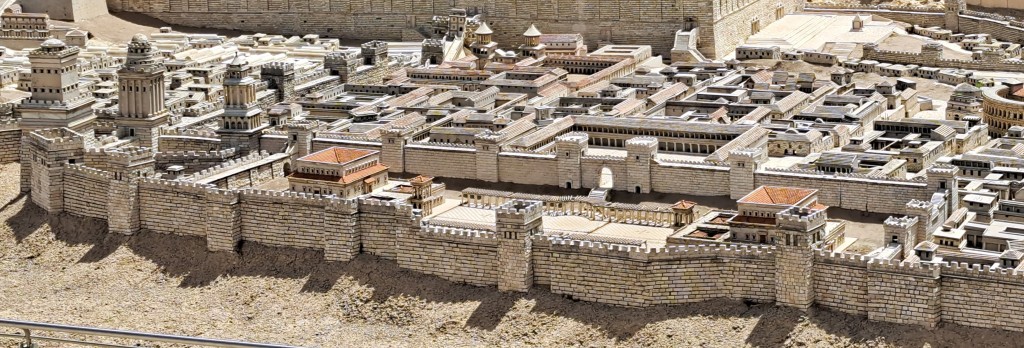
According to the Gospel writers, Pontius Pilate tried Jesus at the governor’s headquarters (lit. Praetorium; Jn 18:28), and that the Praetorium was in a palace (Mk 15:16). Earlier scholars had identified the Praetorium with the Antonia fortress, but the testimony of ancient writers such as Josephus10 and Philo11 indicate that the Roman governors used Herod’s old palace as their residence when they were in Jerusalem. In AD 6, the Romans deposed Herod Archelaus and confiscated his possessions; it makes sense then that the Roman governor would stay in the most impressive accommodations under Roman control when in Jerusalem. Today the consensus is that the Praetorium is to identified with Herod’s palace.12
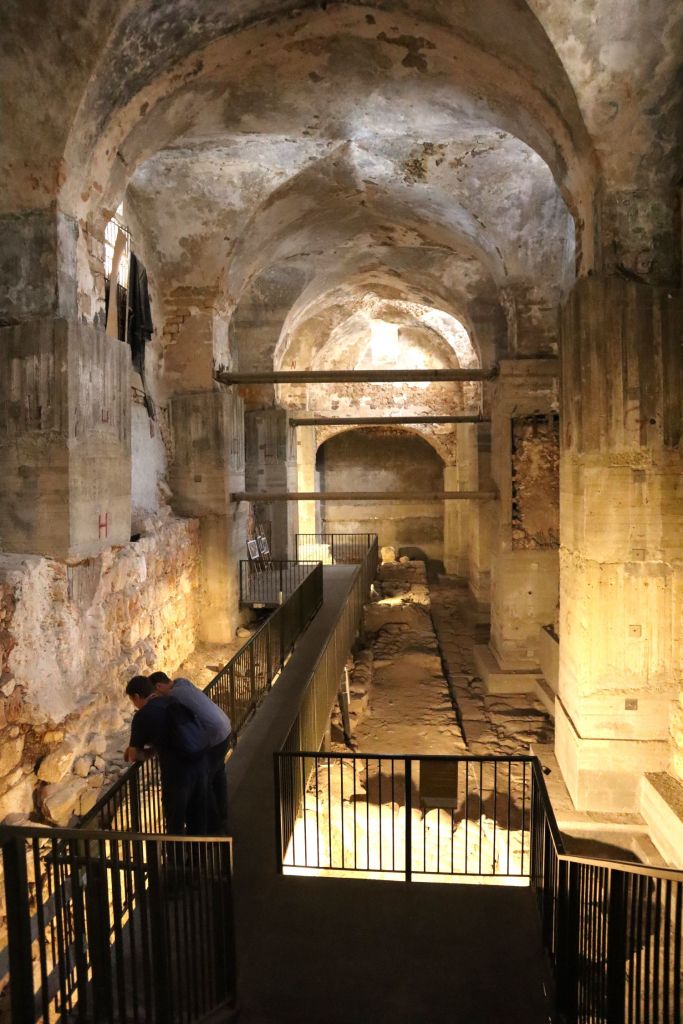
Shimon Gibson has suggested that a monumental gateway with a large courtyard discovered along the western Old City wall which led directly into Herod’s Palace was the site of Pilate’s judgement against Jesus. However, it seems more likely the trial was held in a location accessible from inside the city, either inside the palace complex near an eastern entrance, or in a public square near the eastern side of the palace inside the city.13
Today the meager remains of Herod’s palace/Pilate’s Praetorium can be seen in two places. The base of one of the three towers on the northern part of his palace supports the erroneously-named “Tower of David” near the Jaffa Gate. While many scholars identify it with the tower named Hippicus, Ehud Netzer believed it belonged to Phasael.14 The foundation of one portion of Herod’s palace have been found beneath the Kishle, an Ottomon-era prison that is part of the Tower of David Museum. Excavations have revealed Herodian retaining walls and a drainage channel.15 These are among the few remains of the Praetorium where Jesus was tried.
6. Heel bone of Crucified Man
And when they came to the place that is called The Skull, there they crucified him, and the criminals, one on his right and one on his left. (Luke 23:33 ESV)

Ancient writers, such as Josephus, Seneca, and Plutarch all wrote about Roman crucifixion. Archaeological evidence for this form of Roman execution was first unearthed in 1968 when a construction crew dug up a first-century tomb in northeast Jerusalem. Archaeologists discovered several ossuaries (bone boxes), including one bore the name Jehohanan (Yehohanan). It contained the skeletal remains of an adult male in his twenties who had been crucified, as evidenced by a nail still embedded in his heel bone.16 The nail had been driven into the side of Jehohanan’s heal, indicating he was likely crucified with a leg on either side of the cross.17 Critics have sometimes argued that because Jesus was crucified as a criminal his body would have been thrown into a mass grave rather than dignified with a proper burial. However, the discovery of Jehohanan’s heel bone demonstrates that people could retrieve the body of a crucified person and prepare it for burial it in a tomb, as described in the New Testament.
5. Alexamenos Graffito
But we preach Christ crucified, a stumbling block to Jews and folly to Gentiles. (1 Cor. 1:23 ESV)

The Alexamenos Graffito is an interesting, albeit blasphemous archaeological find relating to the crucifixion of Jesus. In 1857 a drawing was found scratched in the plaster on one of the walls in a structure near the Palatine Hill in Rome. It depicts a man with a donkey’s head on a cross and a person in front raising his hand. The accompanying inscription reads, “Alexamenos worships [his] god.”18 It appears to be graffiti intended to mock a Christian named Alexamenos. Why a donkey’s head? The origin of the idea Christian’s worshiping a donkey-headed God is unknown, but Tertullian notes that even in his day some were “under the delusion that our god is an ass’s head.”19 This is the earliest artistic depiction of Jesus on the cross, and while it is disrespectful, it is early archaeological evidence that people worshiped the crucified Christ as God.
4. Shroud of Turin
So they took the body of Jesus and bound it in linen cloths with the spices, as is the burial custom of the Jews. (John 19:40 ESV)
The Shroud of Turin is a famous linen burial cloth that bears the negative image of a crucified man. While some have suggested it is a clever medieval forgery, no convincing explanation for its creation has been offered. The image is not painted on the material as the image of the body is only located on a few of the top surface fibers, not in the whole threads, as would be expected if it had been an artistic creation.20 An infamous 1988 radiocarbon test that dated the Shroud to the Middle Ages was taken from an area of the cloth that was repaired in the Middle Ages, and contained cotton fibers found nowhere else on the Shroud.21 Moreover, numerous scientific tests have revealed the artifact is indeed an ancient burial shroud:
- The absence of lignin, a chemical substance that disappears over time from linen suggests the cloth is of ancient origin.22
- Residue from a rare type of limestone called aragonite which is common to Jerusalem was discovered near the foot area of the image.23
- A recent study published in the scientific journal PLOS One, analyzed the Shroud and discovered nanoparticles of blood which are found in the blood of torture victims but are not typically found in a normal person.24
- In 2022, a new study from Italy’s Institute of Crystallography of the National Research Council concluded that the Shroud dates to the first century. The scholars used a method called “Wide-Angle X-ray Scattering,” which measures the structural degradation due to natural aging of the cellulose that makes up the fibers of the linen threads.25
Given this evidence, it appears that the Shroud of Turin is an authentic burial shroud from a man who was crucified sometime in the Roman era. In my opinion, to claim it is the burial shroud of Jesus would be stretching the evidence. However, it is an important artifact that contributes to our understanding of Roman crucifixion and affirms biblical details about Jesus’ execution (evidence of torture, nail holes in the hands and feet, and blood from a significant wound in the side).
3. Church of the Holy Sepulchre
And Joseph took the body and wrapped it in a clean linen shroud and laid it in his own new tomb, which he had cut in the rock. And he rolled a great stone to the entrance of the tomb and went away. (Matt. 27:59-60 ESV)
While there are three tombs in Jerusalem that people claim to be the place Jesus was entombed, the Church of the Holy Sepulchre is the site that has the oldest and best evidence to support it. Excavations have revealed that it is located in an area that was once a Jewish cemetery in an ancient limestone quarry outside the walls of Jerusalem in the first century.26 This aligns with the biblical description of the tomb in which Jesus was laid being outside the city walls (Mt 27:39, Heb 13:12).
In the century following Jesus’ death, the tomb was likely venerated by believers as a place of prayer.27 In the second century, after the Jewish Revolt of AD 133-135, the emperor Hadrian buried the tomb of Jesus with fill and constructed a large platform overtop on which he erected a temple to Jupiter and Venus.28 In the fourth century, the emperor Constantine I ordered the pagan temple demolished. As the workers dug down through the fill, they discovered the tomb.29 Constantine had the tomb preserved and a church built over the site. In the subsequent centuries it was destroyed or damaged twice, but rebuilt each time, including a complete reconstruction by the Crusaders in AD 1149, which is essentially the church that stands there today.
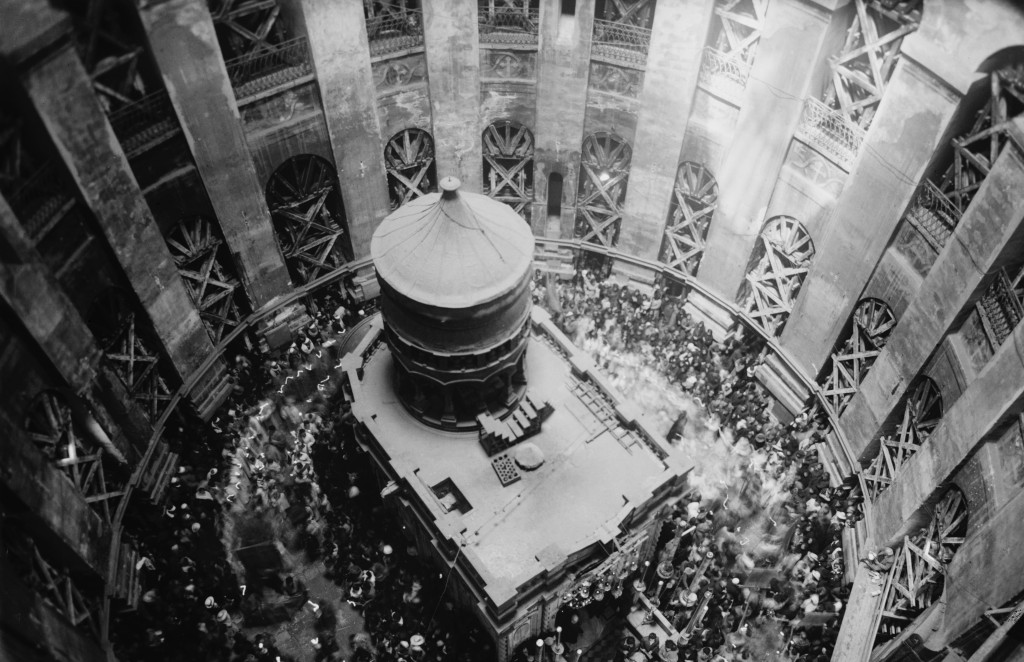
In 2016 restorations were done to reinforce the Edicule (the shrine that surrounds the remains of the ancient tomb). The workers removed the limestone slab that covered the burial bed of the tomb for the first time in almost 500 years. A test of the mortar from the structure surrounding the tomb confirmed it was built in the mid-4th century and then rebuilt in the Middle Ages, thus affirming the ancient written history of the site.30 The remains of the first-century tomb surrounded by the Edicule in the Church of the Holy Sepulchre is the best candidate with the earliest evidence supporting is authenticity as the tomb of Jesus.
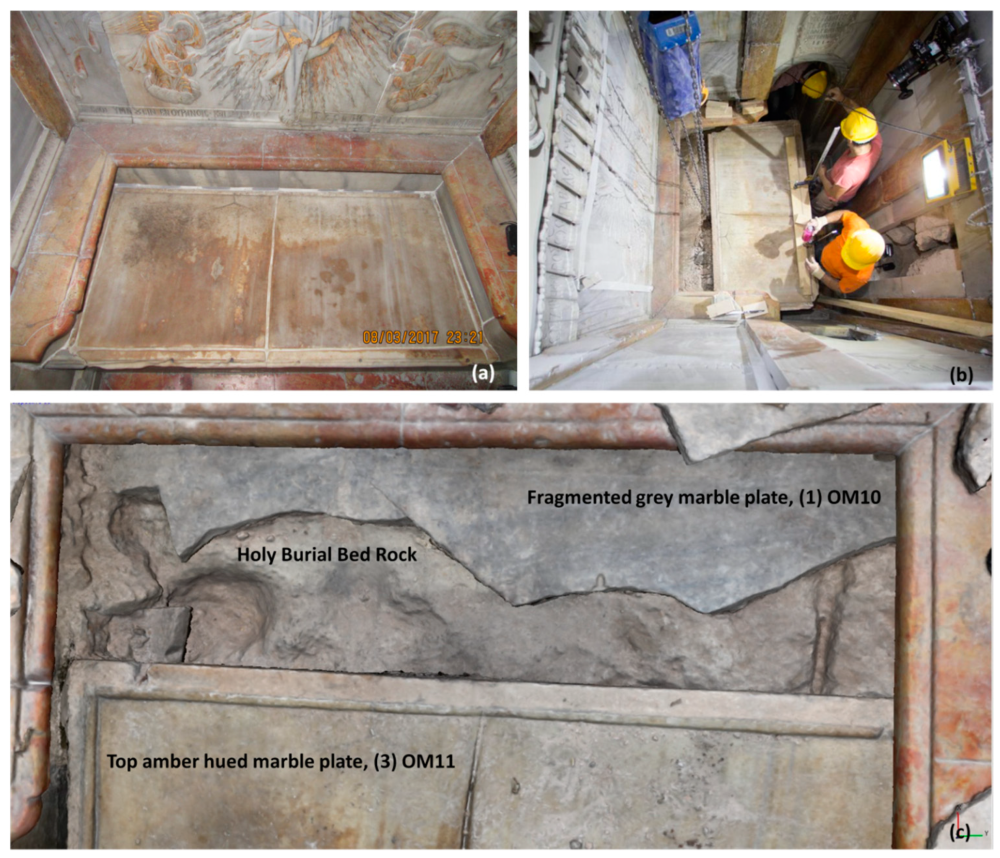
2. Nazareth Inscription
And when they had assembled with the elders and taken counsel, they gave a sufficient sum of money to the soldiers and said, “Tell people, ‘His disciples came by night and stole him away while we were asleep.’ And if this comes to the governor’s ears, we will satisfy him and keep you out of trouble.“ So they took the money and did as they were directed. And this story has been spread among the Jews to this day. (Matt. 28:12-15 ESV).
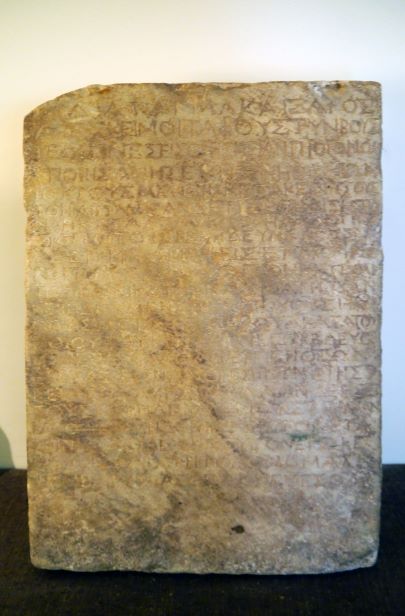
The Nazareth Inscription is a marble slab containing an edict from the emperor imposing the death penalty for anyone who steals the bodies from sepulchre-sealing tombs, such as the type Jesus was buried in. This artifact has been studied for nearly 100 years since it was first published by French scholar M. Franz Cumont in 1930. The inscription, written in Greek, most likely dates to the reign of Claudius (41-54 AD), and appears to be directed at a Jewish audience.31 While it was common in antiquity for grave robbers to plunder tombs to steal the valuables, they never took the bodies. What historical situation would cause Caesar to feel the need to make such a pronouncement?
The Bible records that the Jewish leaders deliberately spread the lie that Jesus’ disciples had stolen the body to explain the fact that the gave was empty after Jesus rose from the dead (Mt 28:13-15). This report probably reached the Roman emperor from his close friend, King Herod Agrippa I. The new Christian sect was likely seen as a dangerous, anti-Roman movement by Claudius.32
In 2020 a new study was published on the Nazareth inscription, and the isotope analysis indicated the marble slab likely came from the Greek Island of Kos (Cos). The authors of the study suggested a different historical context for the inscription: that it was issued by Augustus in response to an event described in an ancient poem in which the people of Kos are said to have broken into the tomb of the tyrant-ruler, Nikias, and desecrated his corpse.33 First, it is not surprising that the marble came from Kos, as almost all marble in ancient Israel was imported due to a lack of local sources. Moreover, there is a close connection historically between the Island of Kos and Galilee: both Herod the Great and Herod Antipas are named in inscriptions to their honor on the Island of Kos, suggesting political and commercial links between the two places. Finally, as Dr. Clyde Billington points out, the newly suggested historical context is speculative and without basis, as there is no evidence of Augustus’s supposed anger at the people of Kos, he is not named in the poem, and the Nazareth Inscription does not mention desecrating bodies, only moving corpses to other locations in order to perpetrate a fraud.34
After studying the Nazareth Inscription in-depth, Dr. Billington concludes: “The context of the Nazareth Inscription clearly proves that it was written for Jews and not gentiles, and that it was almost certainly issued by Claudius in response to the story of the resurrection of Jesus of Nazareth, King of the Jews.”35
1. Manuscript Evidence
Then he said to Thomas, “Put your finger here, and see my hands; and put out your hand, and place it in my side. Do not disbelieve, but believe.” Thomas answered him, “My Lord and my God!” Jesus said to him, “Have you believed because you have seen me? Blessed are those who have not seen and yet have believed.” (John 20:37-41 ESV)
In the decades after Jesus’ resurrection in AD 33, Christianity exploded throughout the Roman empire, and numerous authors – Christian and secular – wrote about his life. Because of the sheer number of references to Jesus, I’ll keep this list to those some of those who wrote within the first 100 years of Jesus’ resurrection.
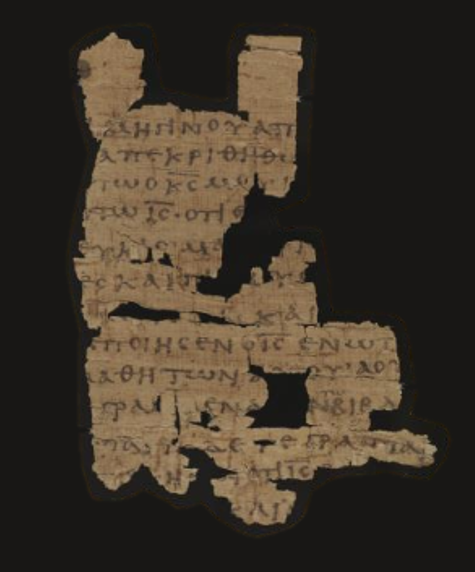
We’ll begin with the obvious: the biblical gospels penned by Matthew, Mark, Luke, and John. Two of them (Matthew and John) were written by eyewitnesses to the resurrected Jesus, and the other two authors got their information from eyewitnesses (Mark from Peter and Luke from carefully investigating everything, including interviewing various eyewitnesses – Luke 1:1-4). According to the latest research, all of these gospels were written between AD 45 and 65.36 The earliest surviving manuscripts of the gospels date to the second century. While Papyrus P52 is the earliest surviving New Testament manuscript fragment, Papyrus P66 (second or third century) is the earliest manuscript preserving a section that testifies to the resurrected Jesus (John 20:37-41).37
In addition to the biblical gospels, other Christian writers, some of whom learned of the death and resurrection of Jesus directly from the apostles, testified that Jesus lived, died, and rose again. These include: Clement of Rome (ca. AD 70-96),38 Ignatius (ca. AD 11),39 Polycarp (ca. AD 110-140),40 and Quadratus (ca. AD 115-138).41
Finally, two non-Christian ancient historians also noted the death and reported resurrection of Jesus. Josephus (ca. AD 93), wrote a famous passage that, in its Greek form, was altered by a Christian scribe in a way that all scholars – Christian and non-Christian – acknowledge includes elements that a Jew like Josephus would never have written. However, an Arabic form without these pro-Christian additions was discovered in the 1970’s. It reads:
At this time there was a wise man who was called Jesus. His conduct was good, and [he] was known to be virtuous. And many people from among the Jews and the other nations became his disciples. Pilate condemned him to be crucified and to die. But those who had become his disciples did not abandon his discipleship. They reported that he had appeared to them three days after his crucifixion, and that he was alive”42
Tacitus (ca. AD 116) wrote about Nero’s attempt to deflect blame onto Christians when he was accused of starting the Great Fire of Rome:
“Consequently, to get rid of the report, Nero fastened the guilt and inflicted the most exquisite tortures on a class hated for their abominations, called Christians by the populace. Christus, from whom the name had its origin, suffered the extreme penalty during the reign of Tiberius at the hands of one of our procurators, Pontius Pilatus, and a most mischievous superstition, thus checked for the moment, again broke out not only in Judæa, the first source of the evil, but even in Rome”43
The “most mischievous superstition” is likely a veiled reference to the belief of the early disciples that Jesus had risen from the dead.
Conclusion
The accounts of the death and resurrection of Jesus are not set in the land of make-believe. It is not a place like Narnia or Middle Earth that one reads about, but an accurately described first-century Jerusalem. It is not King Arthur or Sherlock Holmes that one reads about, but real people known to history whose description in the Bible matches those from secular historical sources. These accounts do not read like myths or legends: there are simply too many details – people, places, and events – that are affirmed by archaeology and other literary sources. Of course, someone who holds an a priori denial of the supernatural may doubt the veracity of these accounts. If, however, a supernatural, all-powerful, loving God exists, then the resurrection of Jesus from the dead is within the realm of possibility.
None of these finds prove Jesus rose from the dead, though I believe he did. Rather, I believe that these finds demonstrate the historical reliability of the gospel accounts in their description of the death and resurrection of Jesus. If Jesus really did die as the atoning sacrifice for the sins of humanity (1 Jn 2:2), and that salvation and eternal life are available through faith (Acts 4:12; Romans 6:23) then this is the most important news of all time (1 Cor. 15:3-8).
COVER IMAGE: Christ Crucified Between Two Thieves, by Antonio Tempesta. Public Domain/Wikimedia Commons
ENDNOTES:
1 The idea that John is appealing to Greco-Roman legal standards comes from my Christian Apologetics Class (BS521) at Trinity Southwest University as part of Masters degree in Archaeology and Biblical History.
2 Donald A.D. Thorsen, “Gethsemane.” In The Anchor Bible Dictionary, ed. D.N. Freedman. (New York: Doubleday, 1992), 3161.
3 Joan E. Tayler, “The Garden of Gethsemane: Not the Place of Jesus’ Arrest.” Biblical Archaeology Review, July/August 1995.
4 Josephus, Antiquities, 18.2.2.
5 Clyde E. Fant and Mitchell G. Reddish, Lost Treasures Of The Bible, William B. Eerdmans Publishing Company, Grand Rapids Michigan, 2008, p. 316.
6 Bryan Windle, “Pontius Pilate: An Archaeological Biography.” Bible Archaeology Report. Oct. 11, 2019. https://biblearchaeologyreport.com/2019/10/11/pontius-pilate-an-archaeological-biography/ (Accessed March 21, 2024).
7 Clyde E. Fant and Mitchell G. Reddish, Lost Treasures Of The Bible, William B. Eerdmans Publishing Company, Grand Rapids Michigan, 2008, p. 312.
8 Amanda Borschel-Dan, “2,000-year-old ‘Pilate’ ring just might have belonged to notorious Jesus judge,” Times of Israel. November 29, 2018. https://www.timesofisrael.com/2000-year-old-ring-engraved-with-pilate-may-have-belonged-to-notorious-ruler/ (Accessed March 21, 2024).
9 Robert Cargill, “Was Pontius Pilate’s Ring Discovered at Herodium?“ Biblical Archaeological Society. December 4, 2018. https://www.biblicalarchaeology.org/daily/biblical-artifacts/inscriptions/pontius-pilate-ring-herodium/ (Accessed March 21, 2024).
10 Josephus, Wars of the Jews, 2.14.8.
11 Philo, Embassy to Gaius, XXXVIII, 299.
12 Shimon Gibson, The Final Days of Jesus: The Archaeological Evidence, (San Francisco: HarperOne, 2009), p. 91.
13 Bryan Windle, “Behold The Man: Where Did Pilate Sentence Jesus?” Bible Archaeology Report. April 14, 2022. https://biblearchaeologyreport.com/2022/04/14/behold-the-man-where-did-pilate-sentence-jesus/ (Accessed March 25, 2024).
14 Ehud Netzer, The Architecture of Herod the Great Builder. (Grand Rapids: Baker Academic, 2008), 127.
15 Amit Re’em, “First and Second Temple Period Fortifications and Herod’s Palace in the Jerusaelm Kishle Compound.” In Ancient Jerusalem Revealed: Archaeological Discoveries, 1998–2018, ed. Hillel Geva. (Jerusalem: Israel Exploration Society, 2019), 141
16 Nico Haas, “Anthropological Observations on the Skeletal Remains from Giv’at ha-Mivtar,” Israel Exploration Journal 20, no. 1 (1970), 38–59.
17 John J. Davis, “Rethinking The Crucified Man From Giv’at Ha-Mivtar.” Bible and Spade. Vol. 15. No. 4 (Fall 2002). Online: https://biblearchaeology.org/new-testament-era-list/4185-rethinking-the-crucified-man-from-givat-hamivtar (Accessed March 26, 2021).
18 “Alexamenos Graffito,” University of Chicago. https://penelope.uchicago.edu/~grout/encyclopaedia_romana/gladiators/graffito.html (Accessed March 25, 2024).
19 Tertullian, Apology, XVI.
20 John Long, “Science Meets The Shroud of Turin,” Bible and Spade (31.1, 2018), pg. 7.
21 Rick Lanser, “Some Ruminations on the Shroud of Turin.” Associates for Biblical Research. July 24, 2014. https://biblearchaeology.org/research/topics/the-shroud-of-turin/3199-some-ruminations-on-the-shroud-of-turin (Accessed March 26, 2024).
22 John Long, “Science Meets The Shroud of Turin,” Bible and Spade (31.1, 2018), pg. 6.
23 Long, p. 7
24 https://www.independent.co.uk/news/world/europe/shroud-turin-blood-torture-victim-research-elvio-carlino-jesus-tomb-a7850621.html (Accessed October 25, 2018)
25 De Caro, L.; Sibillano, T.; Lassandro, R.; Giannini, C.; Fanti, G. X-ray Dating of a Turin Shroud’s Linen Sample. Heritage 2022, 5, 860–870. https://doi.org/10.3390/ heritage5020047
26 Joan Taylor, “Golgotha: A Reconsideration of the Evidence for the Sites of Jesus’ Crucifixion and Burial.” Associates for Biblical Research. Jan. 11, 2010. Golgotha: A Reconsideration of the Evidence for the Sites of Jesus’ Crucifixion and Burial (biblearchaeology.org) (Accessed March 25, 2024).
27 Jerome Murphy-O’Connor, “The Argument for the Holy Sepulchre,” Revue Biblique. Vol. 117, No. 1 (JANVIER 2010), 63-64.
28 Jerome, Epistle 58.3. Online: https://www.newadvent.org/fathers/3001058.htm (Accessed March 26, 2024).
29 Eusebius, Life of Constantine, 3.25-28. Online: https://www.newadvent.org/fathers/25023.htm (Accessed March 26, 2024).
30 Brigit Katz, “Mortar Found at “Jesus’ Tomb” Dates to the Constantine Era,” Smithsonian Magazine. November 28, 2017. https://www.smithsonianmag.com/smart-news/mortar-found-jesus-tomb-dates-constantine-era-180967345/ (Accessed March 26, 2024).
31Clyde E. Billington, “The Nazareth Inscription: Proof of the Resurrection of Christ?” Associates for Biblical Research. May 1, 2020. https://biblearchaeology.org/research/chronological-categories/new-testament-era/4658-the-nazareth-inscription-proof-of-the-resurrection-of-christ (Accessed March 26, 2024).
32 Billington.
33 Kyle Harper, Michael McCormick, Matthew Hamilton, Chantal Peiffert, Raymond Michels, Michael Engel, “Establishing the provenance of the Nazareth Inscription: Using stable isotopes to resolve a historic controversy and trace ancient marble production,” Journal of Archaeological Science: Reports, Volume 30, 2020, https://doi.org/10.1016/j.jasrep.2020.102228 (Accessed March 26, 2024).
34 Bryan Windle, “Scholar’s Chair Interview: Dr. Clyde Billington.” Bible Archaeology Report. March 19, 2021. https://biblearchaeologyreport.com/2021/03/19/scholars-chair-interview-dr-clyde-billington/ (Accessed March 26, 2024).
35 Clyde E. Billington, “The Nazareth Inscription: Proof of the Resurrection of Christ?” Associates for Biblical Research. May 1, 2020. https://biblearchaeology.org/research/chronological-categories/new-testament-era/4658-the-nazareth-inscription-proof-of-the-resurrection-of-christ (Accessed March 26, 2024).
36 Jonathan Bernier, Rethinking the Dates of the New Testament. (Grand Rapids: Baker Academic, 2022), 275.
37 “P66,” The Center for the Study of New Testament Manuscripts, https://manuscripts.csntm.org/manuscript/Group/GA_P66_Bodmer (Accessed March 27, 2024).
38 Clement, Epistle of 1 Clement, 21:6; 24:1.
39 Ignatius, Epistle to the Smyrnaeans, 1 and 2.
40 Polycarp, Epistle of Polycarp, 1:2.
41 Eusebius, Ecclesiastical History, 4.3.2.
42 Schlomo Pines, An Arabic Version of the Testimonium Flavianum and it’s Implications. (Jerusalem: Israel Academy of Sciences and Humanities, 1971), 9-10.
43 Tacitus, Annals, 15:44.


